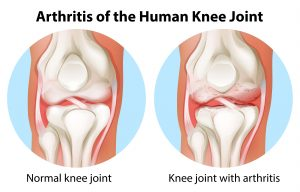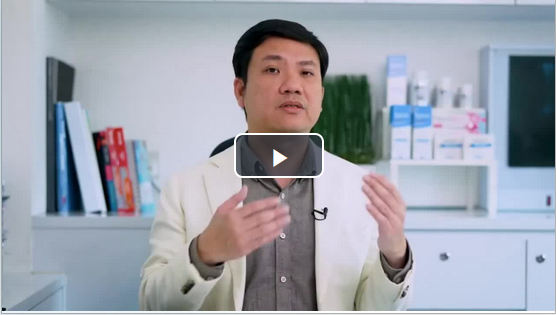An Overview On Arthritis: Its Types, Causes, Risk Factors And Management
Introduction

Arthritis is a very common condition affecting millions of people worldwide and forcing many of those patients to visit pain management clinics for pain relief. It involves inflammation of a joint, and applies to over 100 diseases that have been identified to date. Most of these diseases fall into two broad categories: degenerative arthritis, such as osteoarthritis, or inflammatory arthritis, such as rheumatoid arthritis.
The inflammation can affect any of the important parts of a joint, including the joint lining , bones, cartilage, or the supporting tissues. The condition may affect one, a few, or many joints throughout one’s body.
Types and Causes:
The two main types of arthritis are:
- Osteoarthritis: It is the most common type of arthritis. It affects the whole joint including the bone, cartilage, ligaments and muscles. Osteoarthritis involves wear-and-tear damage to the joint’s cartilage, the tissue that cushions the ends of the bones and allows joint movement, but enough damage can result in bone grinding directly on bone, which causes pain and restricted movement.
- Rheumatoid arthritis: is a common inflammatory form of arthritis. It is an autoimmune disease that causes pain and swelling of the joints. The immune system starts attacking healthy body tissues and targets the lining of the joints, causing inflammation and joint damage.
Other Less Common Types of Arthritis Include:
- Ankylosing spondylitis
- Gout
- Juvenile idiopathic arthritis
- Psoriatic arthritis
- Reactive arthritis
- Septic arthritis
- Thumb arthritis
Fortunately, all these conditions can be dealt with by various qualified arthritis specialists in Singapore.
Risk Factors:
There are many causes that lead to the development of arthritis. These include joint injuries, abnormal metabolism, genetic makeup, infections, and immune system dysfunction. Risk factors for arthritis are many and include:
- Family history: Some types of arthritis run in families. Your genes can make you more susceptible to environmental factors that may trigger arthritis.
- Age: The risk of many types of arthritis increases with age.
- Sex: Women are more likely to develop rheumatoid arthritis. While most of the men have gout, another type of inflammatory arthritis.
- Previous injury: People who have injured a joint, perhaps while excessively playing a sport, are more likely to develop arthritis in that joint.
- Obesity: Carrying excess weight puts stress on joints, particularly on the knees, hips and spine. People who are obese and overweight have a higher risk of developing arthritis.
Symptoms:
Depending on the type of arthritis you have, the signs and symptoms may include:
- Pain
- Tenderness
- Stiffness
- Swelling
- Redness
- Decreased range of motion
- Rash
Management and Treatment:
Diagnosis of arthritis includes a detailed history and physical examination by the doctor or an arthritis specialist. After reaching a diagnosis, the patient can also be referred to a pain management clinic where various non-invasive modalities are used to control pain, minimize joint damage, and improve or maintain function and quality of life.
Treatment of arthritis in multi-disciplinary and might involve the following:
- Medications: usually depends upon the sign, symptoms and the type of arthritis. Some of the common ones used are painkillers like NSAIDS, disease-modifying antirheumatic drugs (DMARDs), Corticosteroids and Biological response modifiers.
- Non-pharmacologic therapies: includes dietary modifications as some types of food may reduce inflammation. Food like fish, nuts, seeds, fruits, vegetables, whole grains, beans and olive oil can provide many nutrients that are good for the joint.
- Physical therapy: these include specific exercises tailored to the condition and individual symptoms, sometimes combined with pain-relieving treatments such as ice or hot packs and massage. Exercises can massively improve range of motion and strengthen the muscles surrounding the joints. Swimming and water aerobics are good choices because the buoyancy of the water reduces stress on weight-bearing joints.
- Heat and cold: Heating pads or ice packs may help relieve symptoms like pain and stiffness.
- Occupational therapy: includes practical advice on managing everyday tasks, choosing specialized aids and equipment like splints or joint assistive aids , protecting the joints from further damage and managing fatigue. Using devices like canes, shoe inserts, walkers, raised toilet seats and other assistive devices can help protect the joints and improve your ability to perform daily tasks.
- Patient education and support: As arthritis is a life-long incurable disease with flare-ups, patient education is mandatory. Support from family friends is very valuable in improving the quality of life. People with arthritis can participate in joint-friendly physical activities together with friends like swimming or cycling.
- Weight-loss: Losing weight will reduce the stress of the weight-bearing joints like hips and knees. This may increase mobility and limit future joint injury.
- Alternative medicine: Many people use alternative remedies like Acupuncture, Yoga, Tai-chi, massage, Glucosamine, Chondroitin. But there is little reliable evidence to support the use and effectiveness of many of these products.
- Surgeries: If conservative measures don’t help the arthritis specialist in Singapore may suggest surgeries such as joint repair, joint replacement or joint fusion.
What To Expect When I Visit The Pain Relief Clinic
A typical visit will involve our doctor first understanding your medical history, concerns and previous experience with other pain treatments.
For patients who have consulted many people but have yet to receive a clear diagnosis, selecting an affordable imaging scan might be recommended to confirm the cause of your pain..
Some patients have already done scans with other doctors for their pain condition but are still not clearly told what they suffer from.
Dr Terence Tan is happy to offer you a second opinion and recommend how best to manage your condition.
We also see patients who already have a confirmed diagnosis from specialist pain doctors, but are "stuck” because treatment options offered are not practical or acceptable.
We can help by discussing options that you might have potentially never been told of.
A common experience is when a patient has already consulted a specialist doctor for pain management and is told to consider orthopaedic surgery which they find too aggressive.
Or they may have seen doctors for their pain and were prescribed painkillers with potential side effects which made them feel uncomfortable.
Many of our patients have also first tried complementary treatments or acupuncture with traditional Chinese pain doctors.
They look for a second opinion after finding any relief experienced from other treatments to be temporary or requiring repetitive treatments, which add up to time and cost.
Especially in such situations, we emphasize using non-invasive medical technology you likely have not been told about .
This can make a big difference to your results.



 Click For Live Back Pain Workshop
Click For Live Back Pain Workshop


